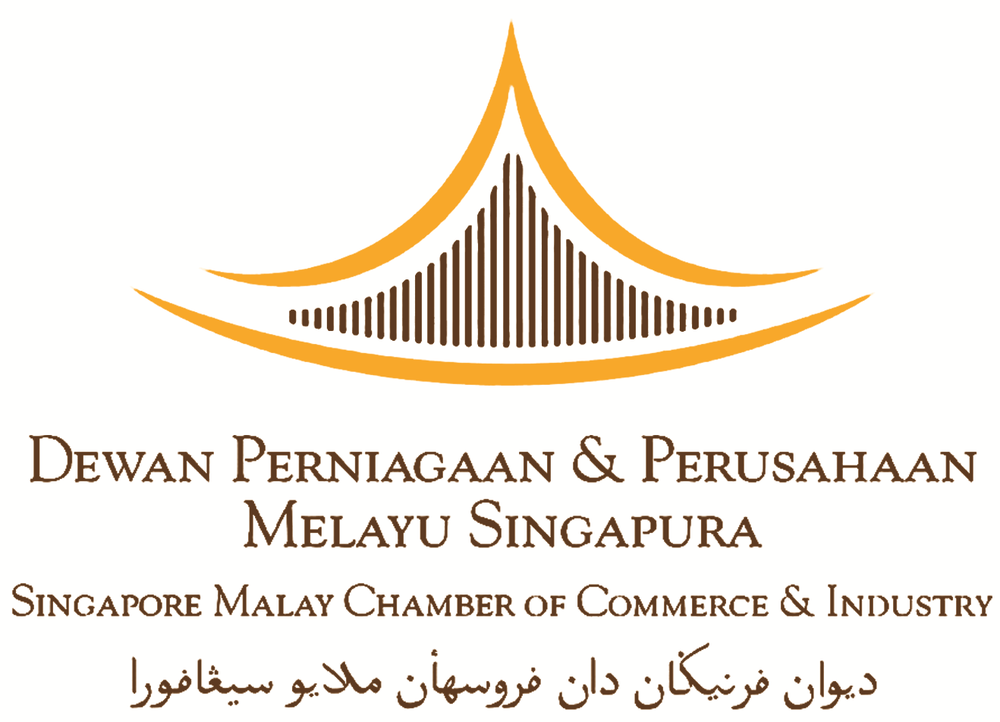- Real CBS Makeovers: 3 Case Studies of SME Owners Who Turned Bad Credit Around
- Ask SmartLend: Why Did My SME Loan Get Rejected?
- Introducing SmartLend Concierge: A Helping Hand for SME Loans
- Legal Ways to Lighten Your Company’s Tax Burden in Singapore
- A Wake-Up Call on Director Duties: The Envy Saga and Other Cautionary Tales in Singapore
- Surviving Cash Flow Crunch: How SMEs Can Use Short-Term Financing Wisely
- Unmasking Business Loan Fraud: How Syndicates and Rogue Brokers Game Singapore’s Lending System—and How AI Can Stop Them
- From Rejection to $60K Approval in 3 Days: How a Fishing Pond Business Got Funded Despite a Flawed Credit Report
- Lender Spotlight: How Poss Capital and SmartLend Partnered For Singapore SMEs
- Which Lender is Right for Your Business in 2025? Banks, Money Lenders, or Alternative Finance
Everything You Need To Know About Registering a Patent In Singapore

Everything You Need To Know About Registering a Patent In Singapore
Registering a patent in Singapore can be an important way to protect your intellectual property. If you have developed or invented a new product, registering patent grants you intellectual property rights over it, which allows you to get the first right to use or sell the invention for 20 years from when the application is filed with Singapore's patent office. It also grants you protection against other people copying or making it without permission during these 20 years. In addition, it also gives you exclusive rights to market your invention in certain countries (Singapore included). Registering a patent can be extremely beneficial if you are looking for ways to make money off of your idea.
This post will cover everything that you need to know about patent registration in Singapore, including what they are, why they're useful, how much it costs and more!
What is a patent?
A patent is a legal document that gives you the right to stop or prevent other people from making, using, importing and selling your invention in Singapore. Patent registration can be extremely useful for protecting your intellectual property against third parties who might otherwise infringe on it without permission.
It's important to note that there are two types of patents: utility patents (which protect inventions which perform some function) and design patents (protecting new designs). Registering both types of patent isn't necessary if one type doesn't apply - but make sure you know which kind of protection best suits your needs!
Why should I register my idea?
Registering your invention the Intellectual Property Office of Singapore (IPOS) provides many benefits such as exclusive rights over marketing in Singapore and preventing others from copying or making it without permission.
The Patents Act enables you to bring legal action against any person who infringes upon a patent.
Registering a patent can also make your idea more attractive to investors and potential buyers, as well as maximise the value of your invention. You may license or sell your patent or use it to secure investment, just to name a few possibilities.
Who is eligible to register the patent?
Anyone is entitled to register the patent if:
You are seeking to patent your invention.
You are a business entity whose employee created an invention in the course of performing normal duties for the company.
You are the inventor's partner, meaning you were involved in the creation of the invention.
To Patent or to Keep Secret?
This is a decision you'll need to take based on your individual circumstances. Registering an idea may be beneficial if you are looking for ways to make money off of it, whereas some people choose not to patent their invention so they can keep the process and formula secret.
A patent is an option for protection that last up until 20 years but during this time the details of your idea are published publicly and therefore can be used by others after it expires.
If you decide against obtaining a patent then there's no guarantee how long your inventions will stay safe from being taken away without patent protection; confidentiality may work as well if done correctly!
Having a patent can be beneficial in terms of giving you the opportunity to set your own prices and sell it with little competition. However, if secrecy is more important than selling or profiting from your idea then a trade secret may be better for you!
Is Your Invention Patentable?
Before a patent can be filed for an invention, it has to meet the legal requirements. The conditions in Singapore is that an invention must be:
novel
involving an invention
capable of industrial application
If any of the above requirements is not met, it will not be patentable.
The Priority Date
The priority date is the date of the first application filed in Singapore for a patent. The earlier that you file, the higher priority it will have. Registering patents early can be beneficial because if someone files an invention before you and are able to prove their claim, their earlier application will take precedence - meaning they gain rights over what would otherwise be yours!
The Procedure for Patent Application in Singapore
There are several steps in the application process for obtaining a patent in Singapore.
Step I - Submitting the Application
To get a patent in Singapore, the applicant must submit an application to the Intellectual Property Office of Singapore via their website using PF1/PF8 forms along with the fee of S$160.00 for filing.
A patent application should be submitted together with the specifications of the invention:
the description of the invention
a claim(s) & a drawing(s) (if any), and
an abstract of the invention
Step II - Preliminary examination
Your application will be examined by the Registrar once the fees for filing are paid (within 30 days of filing the application) and the claims are submitted (within 1 year of the date of filing or priority date, whichever is earlier).
The objective of the preliminary examination is to ensure all the formal requirements are met and the priority claim is valid. If there are some anomalies, the registrar will provide 2 months time from the date of notification for the necessary changes to be made. If the applicant fails to comply with the shortfalls within the stipulated time of 2 months, the patent application will be treated as abandoned.
Step III - Publishing of patent application
The next step of the patent application process is to publish the details of the application in the Patents Journal within 18 months (as soon as possible) from the priority date (or filing date if there is no priority date).
However, the applicant may request for early publication of the application using Patents Form 9.
Now the patent application is open for public inspection once it is published in the journal. Even in this stage, the applicant may decide to keep the invention a secret and can withdraw the patent application using Patents Form CM9.
The idea is, before granting an application for a patent, the patent office will make it available for public inspection so that anyone can object to the invention within the given date of objection proceedings.
Step IV: Search and Examination Processes
Once your invention passes the first evaluation hurdle, this is where things get really interesting! The examiner will search for any possible earlier inventions that are similar to what is being applied for.
If there are indeed some "prior art", as they are called, then the examiner will then examine and compare it to your patent application and determine if the prior art destroys the novelty of your patent application. They will also determine if the other patentability criteria (such as inventiveness and industrial practical application) are met.
When registering a patent in Singapore, the applicant may get art searches reports and examination reports separately or combine them into one report as per the 4 available processes:
Option 1. Search reports and examination reports are issued separately (search report first and after getting the report, examination to be carried out). The official fees for this procedure come to a total of S$3,000 (S$1,650 for the search report and S$1,350 for the examination report). This option allows you to decide if you wish to proceed with the examination only after receiving the search results, but it is more expensive.
Option 2. In this case, a single combined search and examination report will be provided to the applicant for a fee of S$1,950.
Option 3. This process is available for the case when the applicant already has a search report obtained from an international patent application previously done and he/she is only asking for the examination report. The cost is S$1,350. There is the risk, however, that new prior art has been filed since the earlier search report was conducted.
Option 4. If the applicant has previously obtained both the reports as a part of an international patent application, he/she might submit the reports and request for a supplementary examination for free. However, if the foreign search and examination reports are found not to be in accordance with Singapore's patent standards, the published patent may be revoked entirely.
Once the process of the search and examination is done, an opinion on whether the patent is registrable will be issued.
If the patent is eligible, a Notice of Eligibility to Proceed to Grant will be issued. However, if there are unresolved objections, 5 months will be given to the applicant to respond to the examination (or 3 months for supplementary examination).
The office may issue subsequent written opinions (for examination) until all unresolved objections are resolved.
Please note, the patent application will be refused if the unresolved objections cannot be resolved within 18 months from the date of the first written opinion.
Step V - Grant
The applicant must apply for the issuance of the Certificate of Grant within 2 months from the date of receiving the Notice of Eligibility. Failing to meet the deadline will make the application abandoned.
The application is then reviewed by the registrar and if all requirements are met it is granted. Now the patent is protected for 20 years from the Date of Filing or priority date (whichever is earlier) subject to payment of renewal fees, starting from the 5th year.
Frequently Asked Questions
How much does it cost to apply for a Patent?
The total cost of the patent application process varies from case to case and depends on your approach. All the prescribed fees can be found on the IPOS website here.
What are Trade Secrets?
Trade secrets can be defined as physical or non-physical assets that provide competitive advantage (e.g., customer lists) and it is known only by a small group of people. Instead of being protected under intellectual property law, these assets are simply kept secret so that competitors will not gain access to them.
How long does it take to obtain a patent registration in Singapore?
It depends on many things, however, the estimated time for processing is in between 2 to 4 years starting from the application filing date.
How Long Does a Patent Last For?
A granted patent takes effect immediately and lasts 20 years, subject to the condition that annual renewal fees are paid.
Should I get a lawyer or patent agent to file the patent on my behalf?
It is possible to file the patent by yourself but it can be difficult to come up with such specific phrasing. While it is not necessary to do so, there are those who prefer to engage the services of patent professionals. They will know the language and procedure of filing for patents as well as how they affect your business.
Should I submit a model or specimen of my invention?
Patent applications in Singapore typically don't require models or specimens of inventions.
Can I amend my patent application?
Yes, you can make the request for amendment of the patent specification of your application using Patents Form 13 (PF13) or Patents Form 13A (PF13A). However, you must submit the details of the proposed changes with your request.
What if I can't meet the deadline to perform certain actions?
You can request for a time extension to the Registrar on logical grounds.
What if my claims are not fully ready?
A provisional application, known as an Application without Claim(s) or Aw/oC, can be filed. Upon filing an Aw/oC, the applicant must furnish one or more patent claims with the Registry of Patents within the prescribed period of 12 months from the date of filing. When this occurs, the Aw/oC is "converted" into a complete patent application with claim(s), and it can then proceed further in the application process.
It is important to note that the date of filing accorded to the Aw/oC is retained even after "conversion", meaning that this option can be attractive to inventors who wish to lock in an earlier priority date even though they are not yet ready to furnish any patent claims.
Read also: What Are SME Centres And How Do They Help Businesses in Singapore? Smart Towkay Partners with SMCCI
Read also: Roles and Responsibilities of a Company Secretary
-------------------------------------------------------------------------------------------------------
Got a Question?
WhatsApp Us, Our Friendly Team will get back to you asap :)
Share with us your thoughts by leaving a comment below!
Stay updated with the latest business news and help one another become Smarter Towkays. Subscribe to our Newsletter now!
Related
.png)
Which Lender is Right for Your Business in 2025? Banks, Money Lenders, or Alternative Finance
Jul 02, 2025














